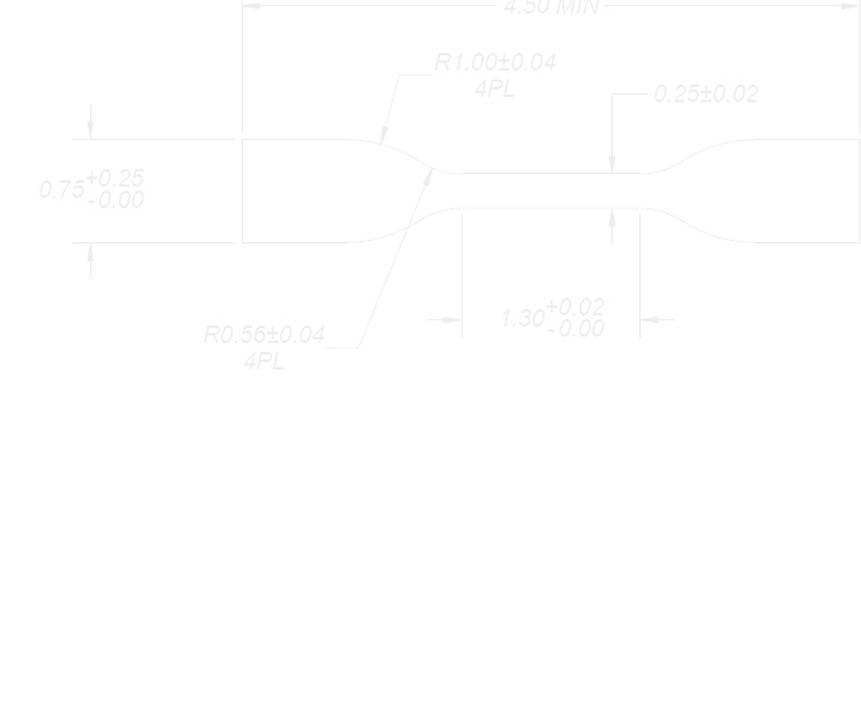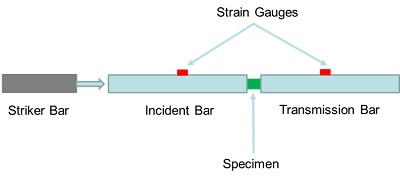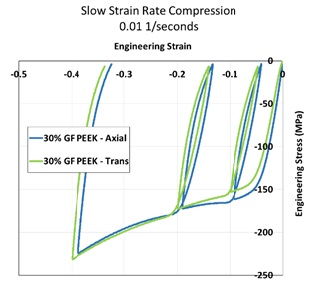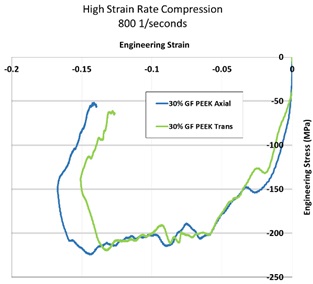
Technical Challenge
There is a shortage of high strain rate, or impact, mechanical test data for fiber reinforced thermoplastics, whether the reinforced polymer is continuously formed as in pultrusion or is formed as discrete injection molded components. Understanding these materials’ impact response as a function of fiber direction is important in automotive applications for crashworthiness and in consumer product uses for drop and impact resistance.
Veryst Solution
Veryst evaluated the high strain rate response of both glass fiber and carbon fiber reinforced PEEK (polyether ether ketone) using the Split Hopkinson Pressure Bar test method. This method permits testing of compressive strain rates on the order of 1000 1/seconds.
Veryst tested two directionally reinforced PEEK materials, the first with 30% glass fiber content and the second with 30% carbon fiber content. Cylindrical compression specimens were machined to be both aligned with and perpendicular to the predominant fiber direction.
Figures 2a and 2b provide the compressive stress/strain behavior of the glass fiber formulation at both slow and high strain rates. Note that the difference in uniaxial mechanical behavior between the two directions is not strong. The strongest effect appears to be the difference in initial elastic modulus.
Material models incorporating rate-dependence can be fit to this data and then subsequently used to simulate both low and high strain rate events, improving designers’ ability to incorporate effectively these materials into engineered products.


